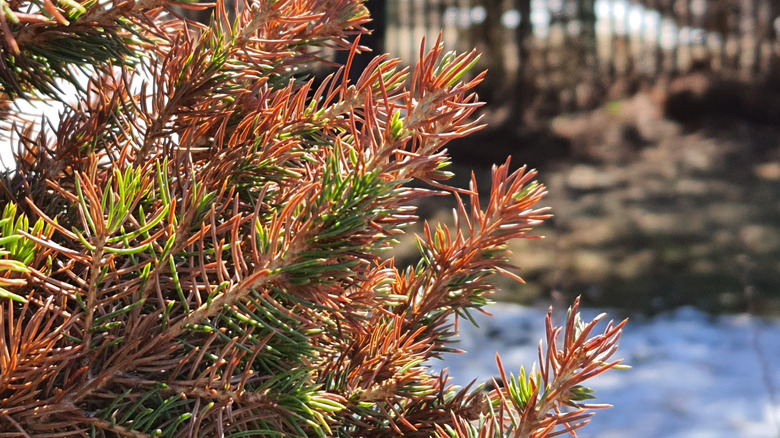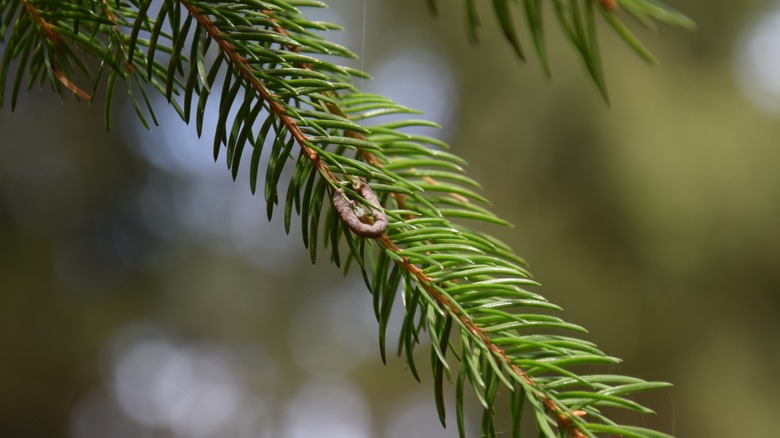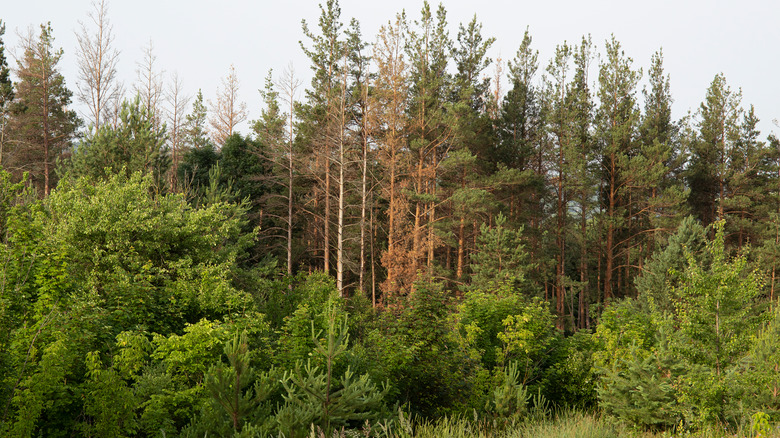The Catastrophic Pest That Can Do Serious Damage To Your Spruce Trees
Spruce trees should be full, green, and vibrant in your yard and landscaping. There are many problems that could lead to damage, including fungal diseases like rhizosphaera needle cast. A bad storm can also cause limb damage that can threaten these trees. If your tree seems to have limited foliage and the branches are dying off, it's certainly reason for concern. If this worsens year after year, it may be brought on by a catastrophic, aggressive pest that, even though it's hard to see, can create significant damage to your spruce trees.
All trees have some insects that call them home, and most of the time, even the presence of numerous types isn't as dangerous as it may initially seem. However, if you have limited or no new growth on a tree, and this continues to happen over several years, it could be due to the presence of the spruce budworm (Choristoneura fumiferana), a native insect that can munch on spruce trees so much so that they may die from the infestation.
What's even more interesting is that these types of insects often cause location-specific outbreaks that occur every 30 to 50 years and may last for a decade or more. During this period, the number of pests present may be higher and much harder to control. While one of the worst garden pests to banish from your yard, you may not have an idea they're present.
Determine if you have a spruce budworm infestation
How do you know if these pests are attacking your spruce tree? The progression of damage to your spruce trees takes time. These pests thrive at all stages of their life on these trees, creating significant damage over time. Typically, you'll notice the upper crowns of the tree will have some discoloration on the outermost areas. If you look closely at this damage, you'll notice that there are webbed needles that have a reddish hue to them. It may look like the tree's branches are drying out from the edges inward. This condition will progress over time, with the white spruce likely not lasting more than seven years before it dies without management or control.
You may also notice the bugs themselves. They start as eggs and then become larvae and caterpillars. The caterpillars have small, cream-colored spots along their back and body. The body is dark brown overall, but some may be a slightly more yellowed color. You'll also notice that the pests tend to have a very dark black head that stands out against the lighter-colored body.
Don't make the mistake of thinking this damage will get better on its own, as when the rain and breezes of late summer and fall blow off the damaged brown areas, the tree may look healthy again. However, its health is not likely to improve and the damage will continue year after year.
What you can do about the spruce budworm
If you have mature spruce trees, these are the most likely host for spruce budworms, though they can also be found on balsam firs. The goal is to reduce the presence or number of pests to give the tree the best ability to recover. The most effective solution is to use a chemical insecticide specifically targeting these pests. Look for a product that contains Bacillus thuringiensis, a type of bacterial pathogen noted for its ability to treat spruce budworm infestations.
Since this type of infestation can take out a whole forest of spruce trees, treating the entire area tends to be necessary to bring the pest infestation under control. For your backyard tree, use pesticides consistently early in the year to minimize damage. Most often, the highest level of damage will occur at the end of spring or early summer, and by treating the tree prior to that, you're giving it the support it needs.
Doing this each year during an outbreak is necessary. Note that it's critical to reach the tops of these trees as that's where most damage begins. That can be difficult to do. If your trees are too tall to easily spray, that's a sign you need to call a tree service with specific pest control experience. With careful monitoring and routine care, it's possible to reduce the damage spruce budworms do to your trees.


